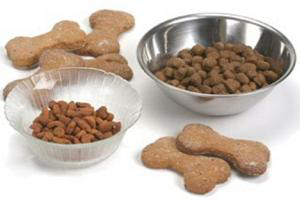Survey reveals pet owners confused about pet nutrition

Many pet owners do take the time to research into the best feed for their pet, but with so much choice available, its no wonder that many pet owner get confused when faced with buying a product which meets the needs of your pet. A recent petMD survey revealed that there is still confusion surrounding pet food labels and what constitutes a nutritious diet.
The main key issues that were identified by the survey are:-
Consumers not reading pet food labels carefully
While the majority taking the petMD survey were aware that a balanced diet is vitally important and that too little or too much of certain nutrients can adversely impact a pet’s health, nearly half admitted that they have never checked the label on their pet’s food to make sure it meets the AAFCO (Association of American Feed Control Officials) standard of being “complete and balanced.”
This is not a trivial concern. The food that owners purchase is most often a pet’s only source of nutrition, not unlike a human infant who is being fed formula. If a nutrient is deficient or present in dangerously high amounts in a dog or cat’s food, a pet’s health will suffer.
Checking for the AAFCO “complete and balanced” statement on a pet food label is one of the quickest and easiest ways for owners to ensure that their pets are getting at least the minimum nutrition they need. Contrary to what some pet parents may think, foods that do not adhere to AAFCO standards are readily available in many retail outlets.
Confusion about importance of life stage diets for pets
The petMD survey revealed that only half of the respondents understood that they should choose an “adult maintenance” pet food for an adult pet. More worrisome, nearly one in four people said they would select an “all life stages” diet as the best choice for an adult pet.
All-life-stages foods must be designed to meet the special nutritional demands of growth and reproduction experienced by puppies, kittens and pregnant females. In comparison to an adult maintenance food, an all-life-stages product must be higher in protein, fat, calcium, phosphorous, sodium, and chloride.
Feeding these types of diets to adult animals can promote obesity and other health concerns. Cutting back on the amount of food offered to prevent weight gain risks deficiencies in other nutrients. While most owners wouldn’t consider feeding a puppy or kitten food to an adult pet, offering an all life stages diet does essentially the same thing.
Consumers unaware of relationship between nutrients and balanced diet
PetMD’s survey revealed that 62% of people thought that on average, a balanced diet for pets involved just 10 or fewer nutrients. In truth, according to current research, over 50 nutrients have to be present in the right amounts and ratios to provide complete and balanced nutrition and to promote optimal health.
Pet parents want what is best for their beloved companions, but sometimes a lack of clarity surrounding pet nutrition gets in the way. Consumers should take the time to look at the label on your pet’s food and make sure it contains an AAFCO statement affirming that the diet provides complete and balanced nutrition specific to your dog or cat’s life stage. Be sure to ask your veterinarian for dietary recommendations as well.
Source PetMD
Join 26,000+ subscribers
Subscribe to our newsletter to stay updated about all the need-to-know content in the feed sector, three times a week. Beheer
Beheer









 WP Admin
WP Admin  Bewerk bericht
Bewerk bericht